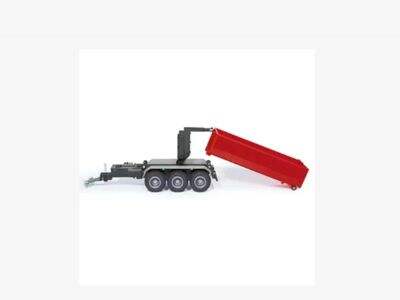Als hydraulische en pneumatische cilinders u worden voorgesteld, wat is uw reactie? Beide zijn zeer cruciale onderdelen in de machine die bijdragen aan beweging en functioneren. Hoewel ze mogelijk vrijwel hetzelfde lijken, zijn er aanzienlijke verschillen tussen beide hulpmiddelen. Laten we dus eens kijken wat ze uniek maakt. Huachen is hier om je te helpen.

In een sectie genaamd de piston wordt deze voortgeduwd door een vloeistof (meestal olie). Er is een zwaar object, genaamd de last, dat de piston optilt of verplaatst wanneer hij heen en weer beweegt. Pneumatische cilinders werken daarentegen met gecomprimeerde luchtdruk, die de piston rechtstreeks duwt, maar niet met vloeistofkracht. Dit is ook nuttig om een last te verplaatsen. Dus vloeistof in het geval van hydraulische cilinders en lucht voor pneumatische IBC's respectievelijk.
Hoe presteren ze?
Om te beginnen met hoe ze werken, hydraulische cilinders en hydraulische krachtbron zijn een zeer sterk en krachtig manier om het werk te doen. Daardoor zijn ze robuuster en hebben ze hogere niveaus van de kracht die nodig is om zware taken uit te voeren. Deze soorten lagers worden vaak gebruikt in bouwapparatuur omdat ze veel zwaar tillen kunnen aanpakken. Pneumatische cilinders daarentegen zijn niet zo krachtig als hydraulische capaciteit, maar hebben bepaalde voordelen. Deze zijn veel sneller en verplaatsen lichtere materialen snel. Het is perfect voor toepassingen die hoge snelheid vereisen, zoals geautomatiseerde systemen en montagebanden.
Efficiëntie van de Cilinders
Hydraulische cilinders worden beschouwd als economischer omdat minder vloeistof nodig is om hetzelfde werk te doen als bij een pneumatische cilinder. Dit laat ze langer werken zonder hun vloeistof bij te vullen. In tegenstelling daarmee hebben pneumatische cilinders een groter volume aan luchtstroom nodig om betrouwbaar te functioneren, wat kan betekenen dat ze op de lange termijn minder kosteneffectief zijn. Dus, als je een cilinder met volledige prestaties nodig hebt, is het beter om te kiezen voor hydraulische cilinders en Hydraulische krachtbron .
Onderhoud en kosten
Alles daargelaten, onderhoud en kosten moeten daarna worden overwogen. Pneumatische cilinders vergelijken met hydraulische cilinders discussiepunten Methode: Wikipedia-creative-commons Onvermijdelijk hebben pneumatische cilinders minder onderhoud nodig dan een hydraulische cilinder en Elektrische hydraulische power pack .Dit komt doordat deze vloeistoffen vaak geïnspecteerd en vervangen moeten worden, zodat ze correct blijven functioneren. Als de vloeistof te laag is of verbrand is, kan dit problemen veroorzaken. Gas cilinders vereisen echter minder onderhoud omdat ze niet door een vloeistof worden aangedreven. Dit maakt ze in effect gemakkelijker te onderhouden. Wat kosten betreft, zijn hydraulische cilinders meestal duurder dan pneumatische. Toch zijn ze doorgaans een goede investering, omdat ze zwaardere belastingen kunnen dragen en op lange termijn robuuster zijn.
Installatie en Bedrijfsvoering
Installatie en bedrijfsvoering van hydraulische en pneumatische cilinders: het lastige deel Het nadeel van pneumatische cilinders is algemeen dat ze gemakkelijker te installeren zijn. Omdat ze kleiner zijn en minder vloeistof nodig hebben om in te richten. Er zijn ook enkele variaties bij het draaien van deze cilinders. Ze vereisen een grote hoeveelheid weerstand om te bewegen, dus ze opereren vaak langzaam. In tegenstelling daarmee hebben pneumatische cilinders lagere drukvereisten en kunnen sneller bewegen. Dat verschil doet er meer of minder toe, afhankelijk van wat je vraagt aan de cilinder.
Wanneer moet je elke cilinder gebruiken
Zou je zulke soort cilinder willen gebruiken in je project? Het hangt allemaal af van wat je moet doen. Hydraulische cilinders worden gebruikt om zeer zware lasten te tillen en duwen, zoals dat vaak wordt toegepast in zware bedrijven. Je kunt ze vaak aantreffen in bouwmachines, landbouwapparatuur en productiesystemen waar kracht vereist is. Aan de andere kant zijn pneumatische cilinders geschikter voor lichtere taken en vereisen snelle lineaire bewegingen (zoals het openen/sluiten van deuren of klemmen). Ze worden breedweg gebruikt in robotica, montagelijnen en verpakkingsapparatuur.

 EN
EN
 AR
AR
 BG
BG
 HR
HR
 CS
CS
 DA
DA
 NL
NL
 FI
FI
 FR
FR
 DE
DE
 EL
EL
 HI
HI
 IT
IT
 JA
JA
 KO
KO
 NO
NO
 PL
PL
 PT
PT
 RO
RO
 RU
RU
 ES
ES
 SV
SV
 CA
CA
 TL
TL
 IW
IW
 ID
ID
 LV
LV
 LT
LT
 SR
SR
 SK
SK
 UK
UK
 VI
VI
 HU
HU
 TH
TH
 TR
TR
 FA
FA
 MS
MS
 GA
GA
 CY
CY
 KA
KA

